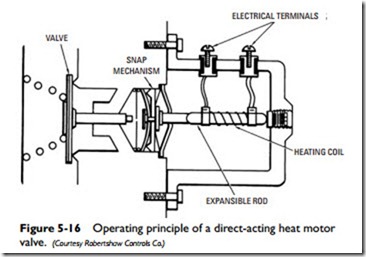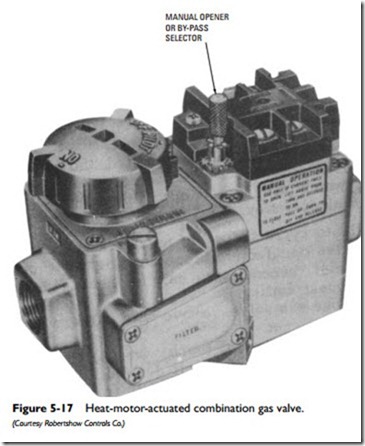Direct-Acting Heat Motor Valves
A direct-acting heat motor valve depends on the heat-induced expansion and contraction of a rod-type element to provide the movement and force for its operation.
The heat is generated by the passage of an electrical current through a resistance coil wound around a metal rod. One end of the rod is secured in place. The other end rests against a flexible snap mechanism (see Figure 5-16). When the room thermostat calls for heat, the electrical current flows through the coil and heats the metal rod. The heat generated by the resistance of the coil causes the rod to expand against the snap mechanism. When enough force is applied to the rod, the snap mechanism snaps over center and opens the valve. When the rod cools and contracts, the snap mechanism returns to its original position, and the valve closes.
Some combination gas valves utilize the direct-acting heat motor principle of operation. The Robertshaw Unitrol 1000E is an exam- ple of this type of valve (see Figure 5-17). It combines in one unit a gas cock, an automatic pilot, a pilot gas filtration device, and a heat-motor-actuated automatic valve. A main gas-pressure regula- tor can be added as an option. As shown in Figure 5-17, a manual opener or bypass selector is a common feature on these valves. When the bypass selector is in the on position and the room thermostat is in
the off position, a bypass rate is provided to the burner for mini- mum input conditions.

